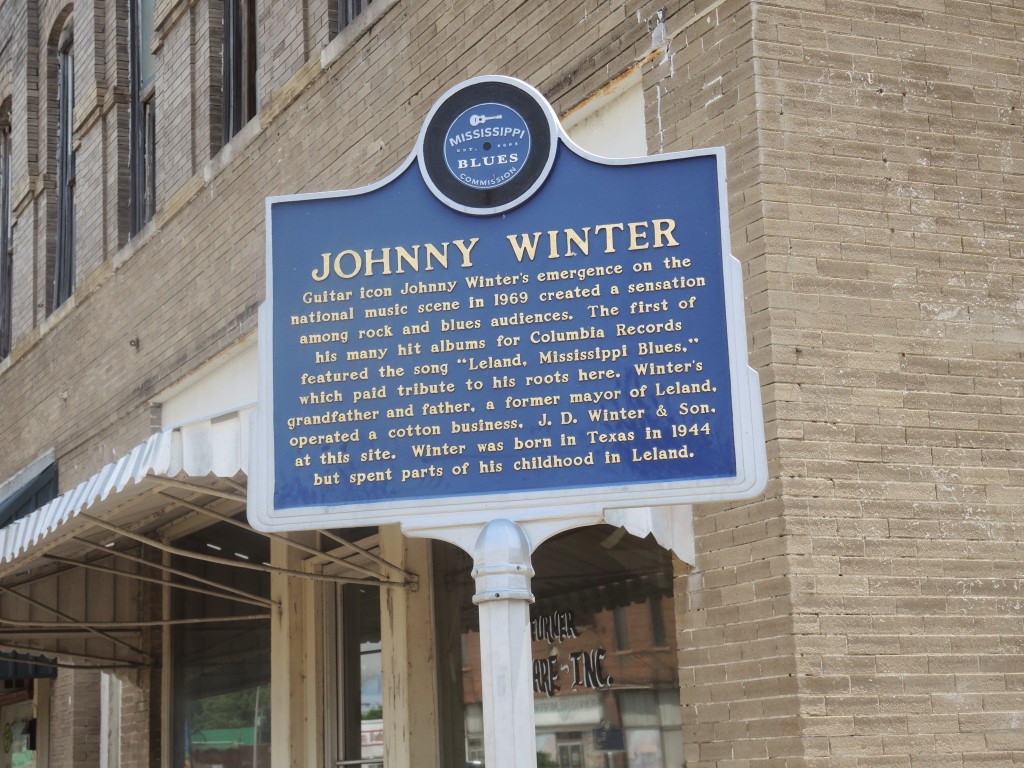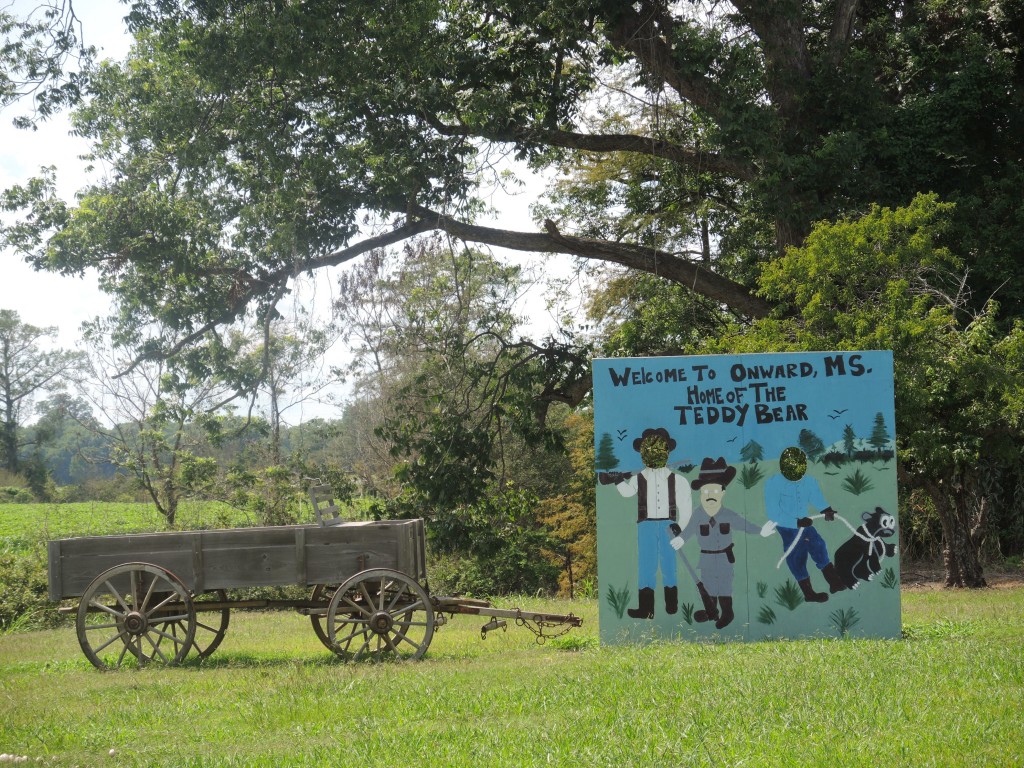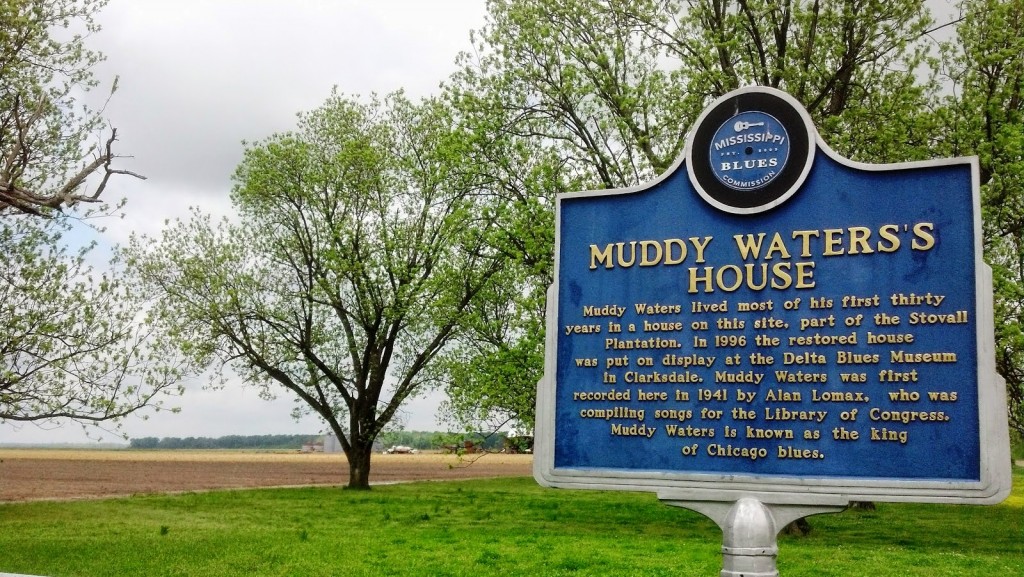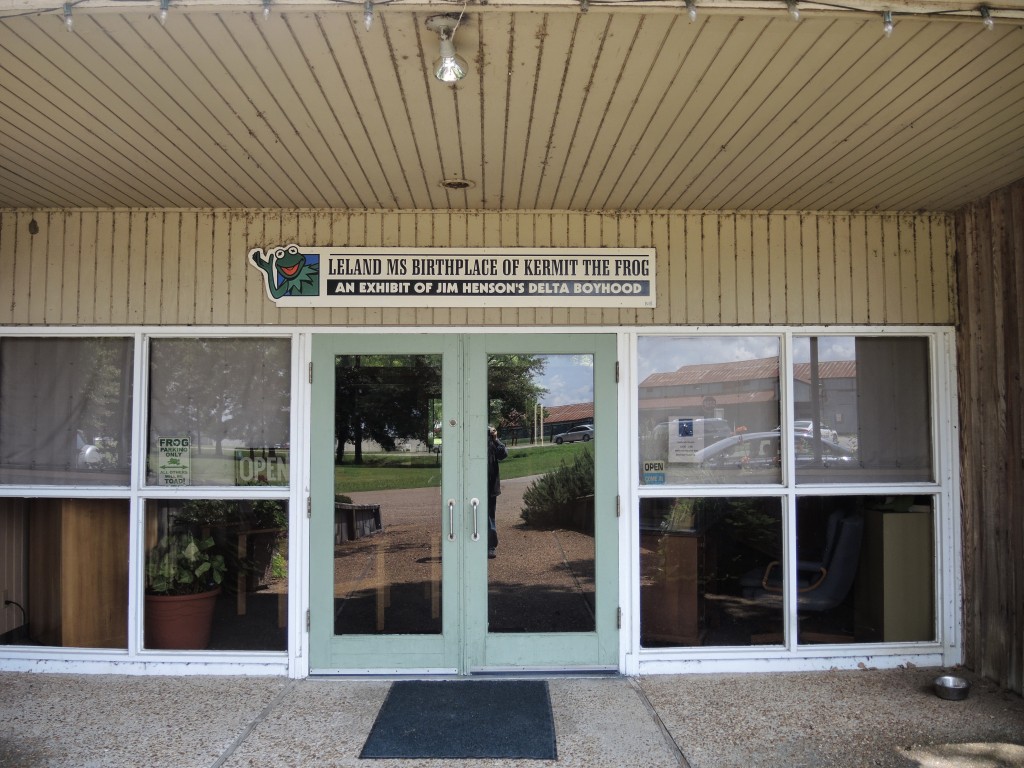And then along comes Monday. It wants to give me kicks and a pick of memories. On one hand, although it was time to leave Clarksburg, it wasn’t quite time to fully leave the blues and the Delta behind. On the other hand, I had a few stops planned before I returned to the blues trail.
The first of these destinations was the Winterville Mounds. Unlike the Effigy Mounds sites further north, the site at Winterville likely arose from a different mound building culture that was decimated by European diseases for which the people had no immunity. Their descendants probably survive as Choctaws, Chickasaws, and other tribes we think of as native to this area but we can’t be certain. This site, one of the largest Native American mound sites in the United States, is dated between 600 and 1000 years old. This is a place that can be particularly fascinating because the people who comprised this society left no written records. Thus, it’s up to archaeologists to apply their science so we can try to gain some understanding of these people and how they lived their lives.
At present, the site consists of 42 acres, has 11 mounds, and two large plazas. Early documents from European settlers and explorers indicate that the site was once much larger and contained at least 23 mounds. The central mound  is 55 feet tall (the equivalent of a five or six story building). At one time, there was certainly a structure on the top of the mound – most likely a temple – that served as a ceremonial center for the people of this community. The mound you see in the picture above degraded through the twentieth century due to erosion and the farming practices of non-Native American people. It was reconstructed in 1968 to its present appearance and now approximates its original shape. One exception made during the reconstruction was replacing a large earthen ramp with the steps you can see in some of the photos in the folder linked above.
is 55 feet tall (the equivalent of a five or six story building). At one time, there was certainly a structure on the top of the mound – most likely a temple – that served as a ceremonial center for the people of this community. The mound you see in the picture above degraded through the twentieth century due to erosion and the farming practices of non-Native American people. It was reconstructed in 1968 to its present appearance and now approximates its original shape. One exception made during the reconstruction was replacing a large earthen ramp with the steps you can see in some of the photos in the folder linked above.
The Mississippi is a river system that frequently floods and alters its course. You may also remember from one of my first posts that the construction of locks and dams by the Corps of Engineers has also altered the river’s course – shortening it by some 200 miles. I’ve resurrected that bit of data because, at the time of their construction, the mounds were within a mile of the river and built on a natural levee. Now, the river isn’t visible even from the top of the tallest mound.
From the Winterville Mounds, I was off to Leland, Mississippi. For me, Leland was a stop I considered di rigueur because it was the childhood home of a famous University of Maryland graduate. Here are your hints:
He was born in Greenville, Mississippi – the location of the closest hospital.
He lived in Leland through the sixth grade when his father, who worked for the Department of Agriculture, was transferred to Maryland.
While in Leland, he was taught to sew by an aunt.
He and his brother spent time playing in and around Deer Creek.
A bridge over Deer Creek in Leland now bears the name “The Rainbow Connection Bridge.”
You can see a sculpture of this graduate sitting on a bench with his most famous creation outside the Stamp Student Union on the campus of the University of Maryland, College Park. And the answer is: Jim Henson.
A family of three left just as I arrived and the volunteer docent at the museum seemed happy to have more company. She was quite talkative about the family photographs and other memorabilia in the small museum – emphatically pointing out a letter from Henson where he declined to return to Leland for some celebration because he was in London at the time. In addition to a replica of Kermit the Frog playing the banjo, another case displays Muppets from the television special The Song of the Cloud Forest. Most of the objects in the collection have been donated or are on loan from the Jim Henson Legacy but there is also a room of “Muppetobilia” from private collections.
Three years ago, the town of Leland renamed the Broad Street bridge over Deer Creek “The Rainbow Connection Bridge.” According to the docent, the town chose that name because Henson’s family insisted the bridge not be named specifically for Henson.
Although born in Texas eight years after Jim Henson, another man who spent much of his childhood in Leland became famous as a blues guitarist. In fact, in 1969 his first record album contained a song titled Leland, Mississippi Blues.
His father was mayor of Leland at one time and had a cotton business at Third and Broad Streets there. The business no longer exists but the spot is honored by this Mississippi Blues Trail Marker. Sadly, Winter, whose picture I’d seen with Muddy Waters in the museum in Clarksdale, died in Switzerland on 16 July 2014 which, in some ways added to the poignancy of this opportunity for me to acknowledge him.
Sadly, Winter, whose picture I’d seen with Muddy Waters in the museum in Clarksdale, died in Switzerland on 16 July 2014 which, in some ways added to the poignancy of this opportunity for me to acknowledge him.
Now that I was back on the Blues Trail, it was time to move on to Indianola where I’d be able to tour the BB King Museum and Delta Interpretive Center. Though pictures were prohibited inside the museum, this was among the more interesting of the blues museums I visited. More than a mere collection of memorabilia and artifacts, more than a mere biographical tour of the life of one of the great guitarists of our time, the Center contextualizes King’s life within the strictures and conditions of the Delta and the role music played in the Civil Rights movement. It also tracks the transformation of the blues into the multi-racial and multi-cultural American phenomenon we know today.
King was born on a cotton plantation and if he didn’t work in the fields from “kin to cain’t” (start work in the field when you “kin” see and work until you “cain’t” see) as a child, he certainly spent some of his youth driving a tractor in the fields and working in a cotton gin – a structure from the latter has become part of the museum.
King began playing the guitar on street corners. When he found people applauded when he played gospel tunes but filled his hat when he played the blues, his course was set. He made an abortive move to Memphis in 1946 but felt unprepared and returned to Mississippi. Early on, before turning to electronic amplification, King played a resonator guitar. This was often an all-steel bodied guitar akin to the dobro that many blues guitarists played because they could get a louder sound.
After two years back in the Delta, BB returned to West Memphis, Arkansas where he began performing on Sonny Boy Williamson’s KWEM radio show. Soon King had a ten-minute segment on KDIA in Memphis and the rest is, as they say, history.
When I finished my tour at the BB King museum, I rushed off to the Onward Store in Rolling Fork. Why would I rush off to the Onward Store? Well, the drive from Indianola needed about an hour and I wanted to get there in time for lunch. From what I’d read, lunch service was a relatively recent addition to the Onward Store (which draws silly tourists like me for an entirely different reason) and it had recommendations not only from Trip Advisor but also from the ranger at the Winterville Mounds park. However, they stop serving lunch at 14:00. If I rushed, I expected I would make it just under the wire.
Truth be told, this might have been one of those circumstances where anticipation created inflated expectations. The lunch was good, the portions were enormous, and the price was right but the menu was very much home style southern that I probably could have matched elsewhere. Still, no complaints about the experience.
However, there was another reason for visiting Onward. Actually, there were two reasons. The first is shown in this photo:. Yes, Onward, Mississippi is the home of the teddy bear. If you require additional proof, there’s a historical marker in the front of the store that you can see in this folder of photos.
Yes, Onward, Mississippi is the home of the teddy bear. If you require additional proof, there’s a historical marker in the front of the store that you can see in this folder of photos.
The other reason for stopping at the Onward store is that it’s actually in Rolling Fork. Now, you might recall that one of the objects displayed at the Delta Blues Museum in Clarksburg was a one room cabin where Muddy Waters had once lived. You might also recall that the one time four room cabin was located on the Stovall Plantation and, after this buildup, you’ve probably concluded that the Stovall Plantation is in Rolling Fork. And you would be right. I needed to work a bit to find the marker but find it I did.
The afternoon was growing late. Fortunately, my next overnight stop – Vicksburg – wasn’t too distant. And, as you’ll see in tomorrow’s entry, my accommodations there were dramatically different from the Shack Up Inn.

A pity Mr. Henson died so young. My favorite muppet-influenced production was the Sci Fi Farscape. A series before it’s time but full of some of the most memorable “muppets” around. The adult version.,
C
Interesting the association of Leland with Jim Henson & Johnny Winter, though. Neh?